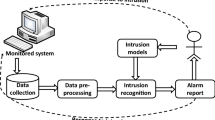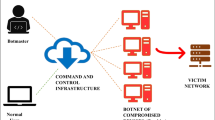Abstract
The act of network intrusion detection is an obligatory part of network performance under security. Unlike other network security strategies, the act of intrusion detection systems should aware the behavior of the users and signature of the intruded and normal transactions, which is continuous process since the user behavior is not static as well the attack strategies are redefining in magnified speed. Hence, the objective of effective intrusion detection is always a significant factor for research. The bioinspired evolutionary strategies are getting the attention of most of the recent research studies. In order to this, the divergent contexts such as minimal computational complexity, prediction accuracy, ensemble models have been considered as significant objective. The other most significant objective and compatible to current state of art is IDS scalability and robustness in high-speed networks, hence the evolutionary computation approaches are adoptable. In this study, we propose an intrusion detection approach that is based on evolutionary computation technique called Cuckoo search. Further, the proposed detection system is investigated thoroughly in the context of accuracy, robustness, and also from the evolutionary computation point of view.
Access this chapter
Tax calculation will be finalised at checkout
Purchases are for personal use only
Similar content being viewed by others
References
D.S Bauer, M. K. (1988). NIDX- an expert system for real-time network intrusion detection. Proceedings of the Computer Networking Symposium, 98–106.
Mell, R. B. (2001). Intrusion Detection Systems. NIST Special Publication on Intrusion Detection System.
A. Sundaram. (1996). An introduction to intrusion detection. The ACM student magazine.
Denning, D. (1986). An intrusion-detection model. In IEEE computer society symposium on research in security and privacy, 118–131.
T.Lane. (2000). Machine Learning techniques for the computer Security. Purdue University.
Stolfo, W. L. (1998). Data mining approaches for intrusion detection. Proc. of the 7th USENIX security symposium.
W. H. Chen, S. H. (2005). Application of SVM and ANN for intrusion detection. Comput Oper Res Vol-ume 32, Issue 10, 2617–2634.
Kennedy, J. (2010). Particle swarm optimization. Encyclopedia of Machine Learning, 760–766.
Katar, C. (2006). Combining multiple techniques for intrusion detection. Int J Comput Sci Network Security, 208–218.
Chen Y, A. A. (2005). Feature deduction and intrusion detection using flexible neural trees. Second IEEE International Symposium on Neural Networks, 2617–2634.
A. Abraham, R. J. (2007). D-scids: distributed soft computing intrusion detection system. J Network Computer, 81–98.
Hassan, M. M. (2013). Current studies on intrusion detection system, genetic algorithm and fuzzy logic. International Journal of Distributed and Parallel Systems, 35–48. Retrieved from arXiv.
Sindhu, S. S. (2012). Decision tree based light weight intrusion detection using a wrapper approach. Expert Systems with applications, 129–141.
Li, Y. X. (2012). An efficient intrusion detection system based on support vector machines and gradually feature removal method. Expert Systems with Applications, 424–430.
Bhatti, D. G. (2012). Conceptual Framework for Soft Computing based Intrusion Detection to Reduce False Positive Rate. International Journal of Computer Applications, 1–3.
ISCX, U. (2012). UNB ISCX Intrusion Detection Evaluation DataSet. Retrieved from Information Security Centre of Excellence: http://www.unb.ca/research/iscx/dataset/iscx-IDS-dataset.html.
Brunswick, U. o. (n.d.). Information Security Centre of Excellence. Retrieved from University of new Brunswick: http://www.unb.ca/research/iscx/index.html.
Goodman, N. R. (1963). Statistical analysis based on a certain multivariate complex Gaussian distribution. Annals of mathematical statistics, 152–177.
Leys, C. L. (2013). Detecting outliers: do not use standard deviation around the mean, use absolute deviation around the median. Journal of Experimental Social Psychology, 764–766.
Powers, D. M. (2006). Evaluation: from precision, recall and F-measure to ROC, informedness, markedness and correlation. 23rd International conference on machine learning. Pitsburg.
Author information
Authors and Affiliations
Corresponding author
Editor information
Editors and Affiliations
Rights and permissions
Copyright information
© 2017 Springer Nature Singapore Pte Ltd.
About this paper
Cite this paper
Gariga, K.R., Reddy, A.R.M., Rao, N.S. (2017). PDA-CS: Profile Distance Assessment-Centric Cuckoo Search for Anomaly-Based Intrusion Detection in High-Speed Networks. In: Satapathy, S., Bhateja, V., Udgata, S., Pattnaik, P. (eds) Proceedings of the 5th International Conference on Frontiers in Intelligent Computing: Theory and Applications . Advances in Intelligent Systems and Computing, vol 515. Springer, Singapore. https://doi.org/10.1007/978-981-10-3153-3_17
Download citation
DOI: https://doi.org/10.1007/978-981-10-3153-3_17
Published:
Publisher Name: Springer, Singapore
Print ISBN: 978-981-10-3152-6
Online ISBN: 978-981-10-3153-3
eBook Packages: EngineeringEngineering (R0)




